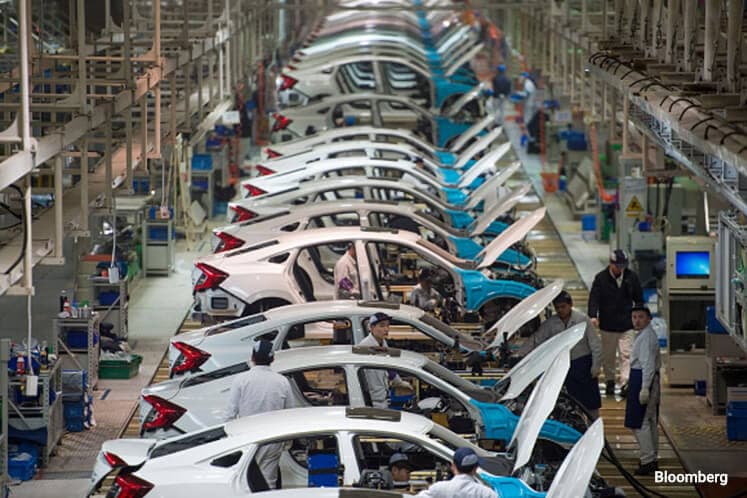
COMMODITIES used for industrial purposes, including non-precious metals and rubber, have been on a tear since the second half of 2016. Oil prices, though, have recently started to fall. Investors are now wondering where does the market go from here, and what data should they be watching? There’s a simple answer to both questions.
The most important driver of commodity prices is global growth, and a good proxy for that is Chinese growth, or more specifically, Chinese manufacturing. The China story that’s been told over the past few years has focused on slower gross domestic product (GDP) growth rates for the domestic economy, but that is both an oversimplification and a much more pleasant story than the reality. The hard truth is that China spent 18 of the past 27 months in a manufacturing recession.
China entered a manufacturing recession in December 2014 that lasted until June 2016. This isn’t reflected in the GDP reports or in the official Purchasing Managers’ Index (PMI) data. Instead, it can be seen in a private survey of purchasing managers at small- to medium-sized manufacturers known as the Caixin report released by Markit Economics. It is the PMI to watch for China, and it showed monthly contractions in all but one month between December 2014 and June 2016.
When people ask me why oil prices or industrial metal prices fell during that period, I have consistently given one answer: China was in a manufacturing recession. It was not the shale oil revolution, high inventories of industrial metals, or a strong US dollar that pushed various commodity prices lower. It was a manufacturing recession in China. China is both the world’s factory and the source of the greatest expected levels of oil demand growth. It also consumes the majority of the world’s aluminum and a plurality of the world’s natural rubber in its manufacturing processes.
The Chinese manufacturing recession sent prices of oil, aluminum, copper, rubber, and other industrial commodities lower throughout 2015 and put some commodities (like oil) under further pressure in the early part of 2016. But when China started turning a corner in the first half of 2016, and finally started expanding again in the second half of 2016, industrial metal prices rose sharply, and oil prices jumped to levels where they also found support after the 2016 US summer driving season.
The global growth prospects reflected by the Chinese Caixin Manufacturing PMI also affected less commonly discussed industrial commodities. In the same way that aluminum prices bottomed when the Caixin Manufacturing PMI bottomed in the fourth quarter of 2015, so did rubber prices.
It should not be a surprise that global growth is a key driver of rubber, aluminum and oil prices. These commodities reflect industrial demand. The emergence of the middle class, especially in Asia, is at the crux of expected future oil demand growth. But, it is also at the heart of almost all growth in commodities demand. As China, India, and other emerging Asian economies, the number of consumers with disposable income will rise. This will drive purchases of some goods — like automobiles — to new highs. There were record levels of vehicles sold in 2016, and expect record sales to continue. This presents additional fundamental demand for commodities, as higher vehicle sales drive up oil consumption per capita, industrial metals demand for parts and chassis, as well as natural rubber demand for tyres.
Comments by Opec officials are being watched extra closely for any potential implications for oil supply and prices. But, the US summer driving season began on March 21 on the Nymex, when the April US West Texas Intermediate crude oil contract closed. This is a seasonally bullish event for crude oil prices. Plus, product inventories have been falling in recent weeks, such that there are year-on-year deficits for both gasoline and distillates. Gasoline inventories, which have fallen over the past four consecutive weeks, are down 1.4% from a year earlier, while distillate inventories, which have fallen during the past five consecutive weeks, are down 2.5%. As such, the US Department of Energy oil inventory report on Wednesday was watched closely — especially for potential product inventory changes.
Although near-term oil price action is likely to be impacted by the imminent onset of the US summer driving season, the medium-term trend is likely to be set by the pace of Chinese manufacturing. And Chinese Manufacturing PMI data have not only been expanding, but they have also been accelerating in recent months. For now, this is fundamentally supportive of oil and industrial commodity prices. But, if you want to know when commodity prices could really go south — or north — quickly, pay less attention to stories about rising supply, and watch the Caixin Manufacturing PMI releases closely. — Bloomberg
This column does not necessarily reflect the opinion of the editorial board or Bloomberg LP and its owners.